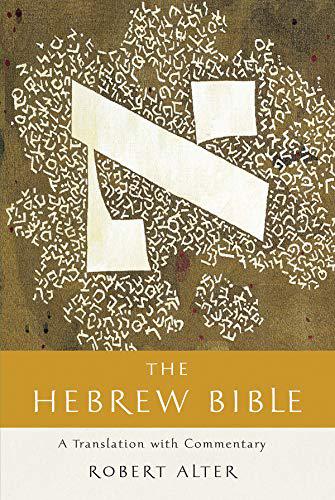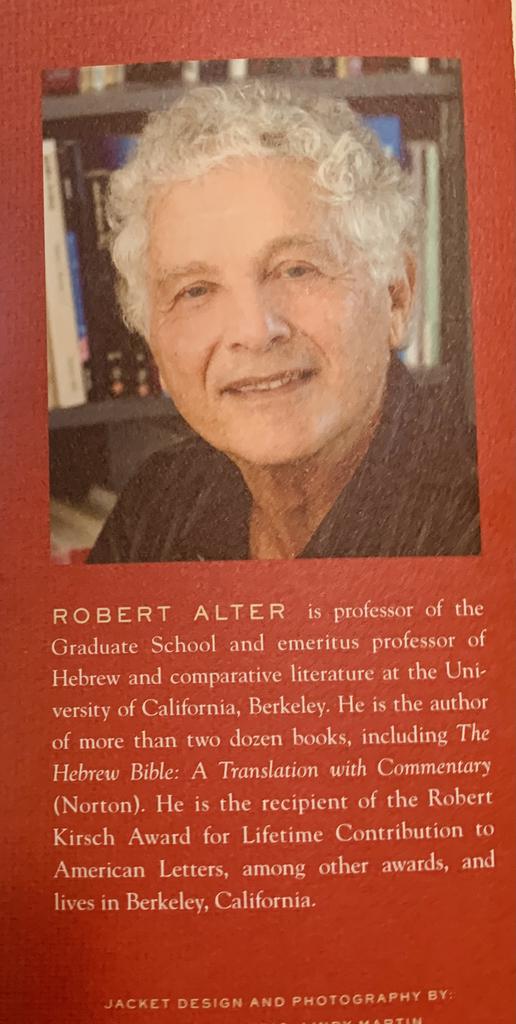
The Hebrew Bible: A Translation with Commentary - Kindle Edition
[MS: Complete with 28 Introductory essays and Notes, in addition to landmark translation word by word. The 2024 Price is quite reasonable at about $75. Copyright Material. Emphasis, additions and editing are added.]

On Sefaria (see link below), there is a collection of several dozen Sheets by Michael Scher ( MS) about Robert Alter that explain:
*Robert Alter's methods of reading the Bible's, literary style and religious meanings;
*how you can listen to lectures by Alter (the best way to explore his ways of thinking;
*introductions to his books and translations and comments on Alter's work by other public intellectuals;
*the 28 essays introducing each book or major work;
*and, of course, his masterful Translation with Notes on all of Tanach. See: Robert Alter - MS Sefaria Sheet Collection.
PARSHA: Leviticus : Note 16 in its crop with its feathers.
Alter is the master of each word no matter how technical or ancient. Footnote 16 is very technical, about the opening under a bird's wing: is it a crop or a crissum? Not quoted here, this is a good example of his mastery of each word in the Bible.
But Alter goes beyond the words to find the Bible's themes and methods. What is the Bible's unique literary style? How does the Bible deliver its messages? For the bigger picture: See the MS Sefaria Robert Alter Collection.
Alter's essay Introduction to Leviticus looks at the hard problems we may have in appreciating this ancient text. [MS: Copyright Material. Additions, emphasis and edits are supplied.]
"If the Torah was assembled from its sundry literary sources by Priestly writers, as scholarly consensus holds, sometime during the sixth century B.C.E., in the decades following the fall of Judah in 586, it is understandable that these editors should want to make the concerns of their own sacerdotal guild the keystone of the literary structure they were establishing. The emphasis, moreover, on the regimen of sacrifices must have had a kind of historical poignancy and an ideological urgency for them: the Temple with all its splendid furnishings and accoutrements had been reduced to rubble by the Babylonian invaders, with much of the Judahite population driven into exile, and these intricate legal instructions about ritual conduct within the sacred space of the Tabernacle were a means of reinstating the vanished temple as a fact of the imagination and a blueprint for future restoration.
Precisely this message was strongly carried forward into post-biblical Judaism. Two whole tractates of the Talmud, based on Leviticus, would be devoted to the laws of the cult and would remain the object of intensive study; and at least by the later Middle Ages, small Jewish boys were introduced to the Torah not through the great story of creation and the absorbing tales of the patriarchs in Genesis but through Leviticus in Rashi’s formulation of the pedagogic slogan, “Let the pure ones come and study laws of purity.” Does Leviticus, in all its legalism and all its focus on sacrificial and purgative procedures, have some sort of literary coherence?
….
There is a single verb that focuses the major themes of Leviticus—“divide” (Hebrew, hivdil). That verb, of course, stands at the beginning of the Priestly story of creation: “And God saw the light, that it was good, and God divided the light from the darkness. . . . And God made the vault and it divided the water beneath the vault from the
water above the vault, and so it was.” In this vision of cosmogony, the condition before the world was called into being was a chaotic interfusion of disparate elements, “welter and waste.”
What enables existence and provides a framework for the development of human nature, conceived in God’s image, and of human civilization is a process of division and insulation—light from darkness, day from night, the upper waters from the lower waters, and dry land from the latter. That same process is repeatedly manifested in the ritual, sexual, and dietary laws of Leviticus.
….
None of this, I suspect, really mitigates the sense of strangeness that people of our own era are likely to feel in reading Leviticus. The preoccupation with dermatological conditions, genital discharges, mildew, the recipes for fritters and breads used in the cult, and the dissection of animals and the distinctions among their various inner organs does not correspond to modern assumptions about the content of great sacred literature.
Nevertheless, all these regulations are reflections of a pervasive spiritual seriousness grounded in a comprehensive, coherent conception of reality.... This ritual implementation of the monotheistic vision was a battle against the inchoate. Holiness could be achieved, and had to be protected, only by a constant confirmation of hierarchical distinction, by laying out reality in distinct realms and categories separated by barricades of prohibitions. ….
[A]uthorized ritual is in all respects the exact opposite of ecstatic orgy (another departure in principle from the pagan world as it was imagined by Israelite writers). ...
This particular ban, like most of the injunctions of Leviticus, is framed to implement a general ideology of separation as “a perpetual statute for your generations, to divide between the holy and the profane, and between the unclean and the clean, and to teach the Israelites all the statutes that the LORD spoke to them by the hand of Moses” (10:9–11).
./././././././.
[MS: Revised March 14, 2024]



